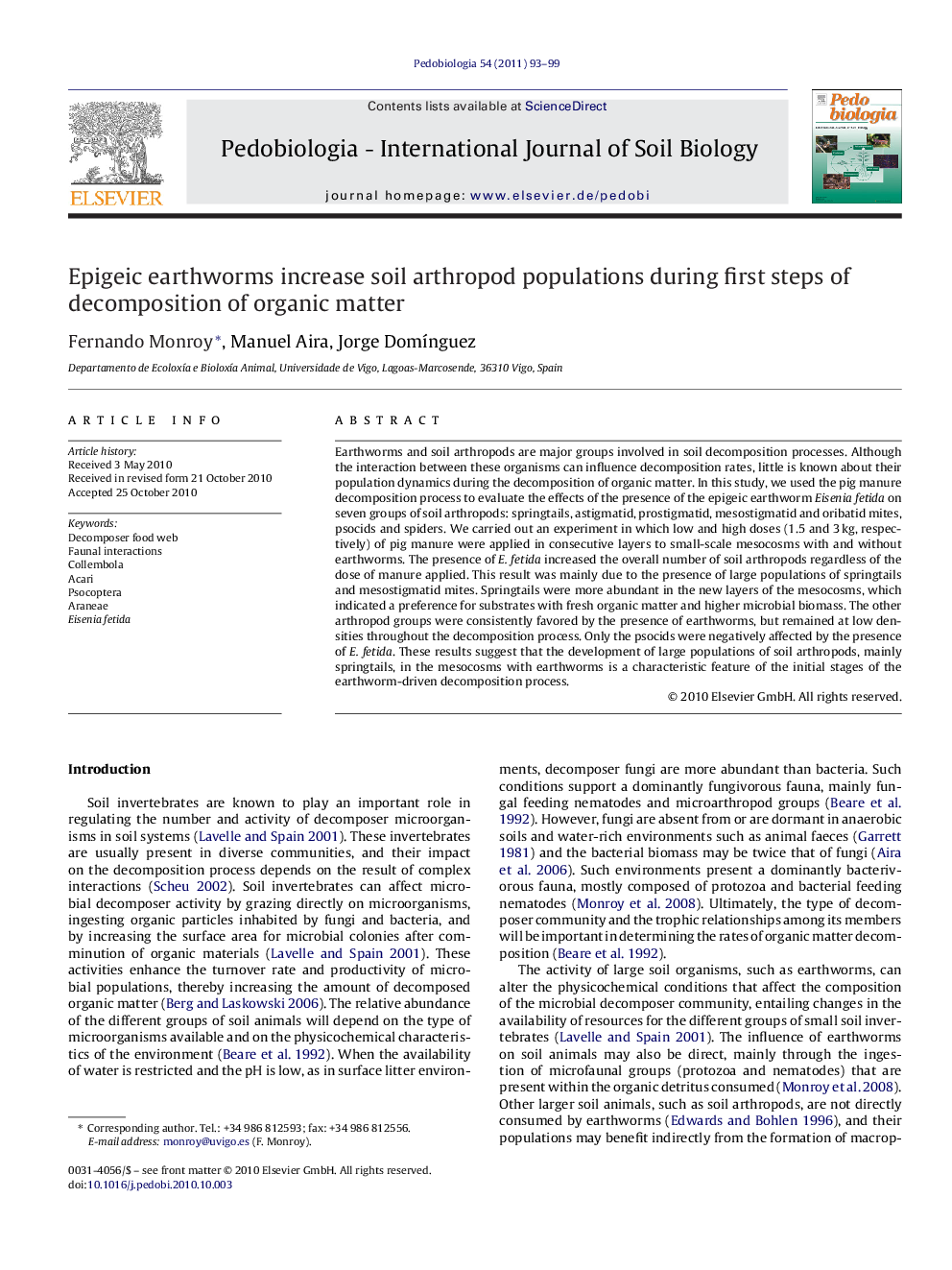| کد مقاله | کد نشریه | سال انتشار | مقاله انگلیسی | نسخه تمام متن |
|---|---|---|---|---|
| 2061482 | 1076494 | 2011 | 7 صفحه PDF | دانلود رایگان |

Earthworms and soil arthropods are major groups involved in soil decomposition processes. Although the interaction between these organisms can influence decomposition rates, little is known about their population dynamics during the decomposition of organic matter. In this study, we used the pig manure decomposition process to evaluate the effects of the presence of the epigeic earthworm Eisenia fetida on seven groups of soil arthropods: springtails, astigmatid, prostigmatid, mesostigmatid and oribatid mites, psocids and spiders. We carried out an experiment in which low and high doses (1.5 and 3 kg, respectively) of pig manure were applied in consecutive layers to small-scale mesocosms with and without earthworms. The presence of E. fetida increased the overall number of soil arthropods regardless of the dose of manure applied. This result was mainly due to the presence of large populations of springtails and mesostigmatid mites. Springtails were more abundant in the new layers of the mesocosms, which indicated a preference for substrates with fresh organic matter and higher microbial biomass. The other arthropod groups were consistently favored by the presence of earthworms, but remained at low densities throughout the decomposition process. Only the psocids were negatively affected by the presence of E. fetida. These results suggest that the development of large populations of soil arthropods, mainly springtails, in the mesocosms with earthworms is a characteristic feature of the initial stages of the earthworm-driven decomposition process.
Journal: Pedobiologia - Volume 54, Issue 2, 10 March 2011, Pages 93–99